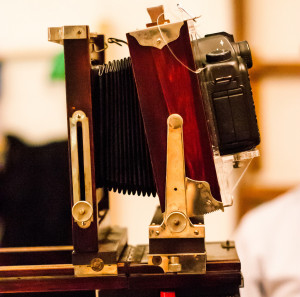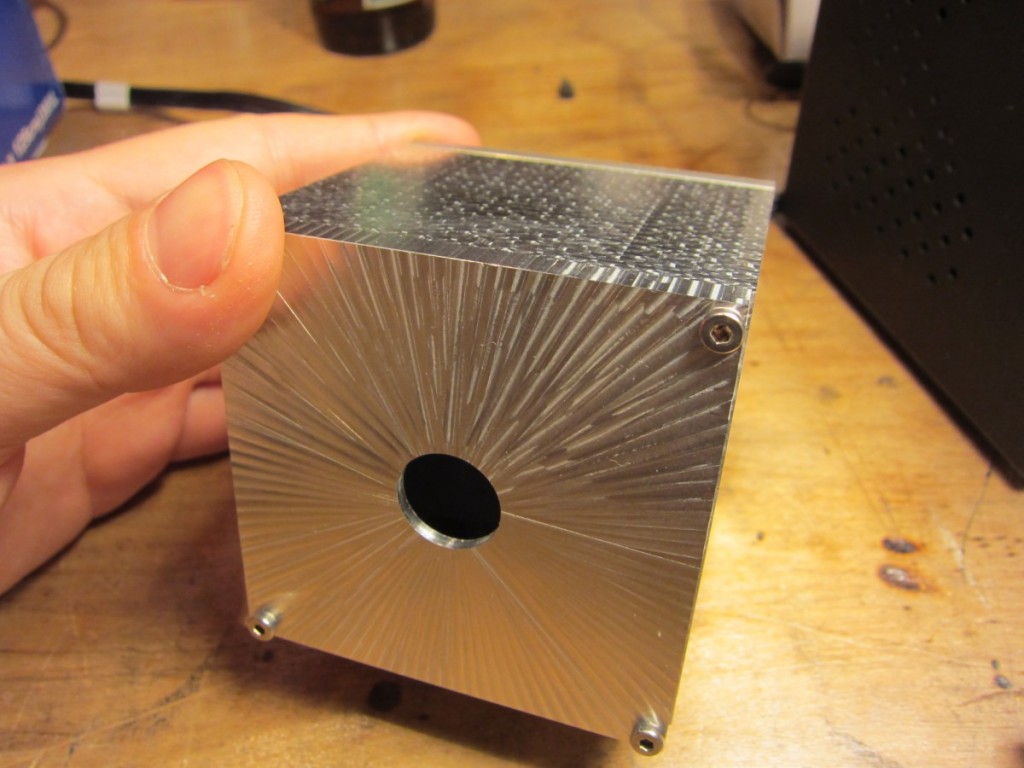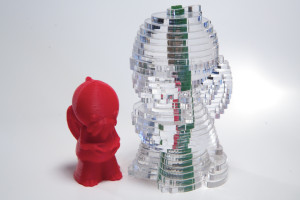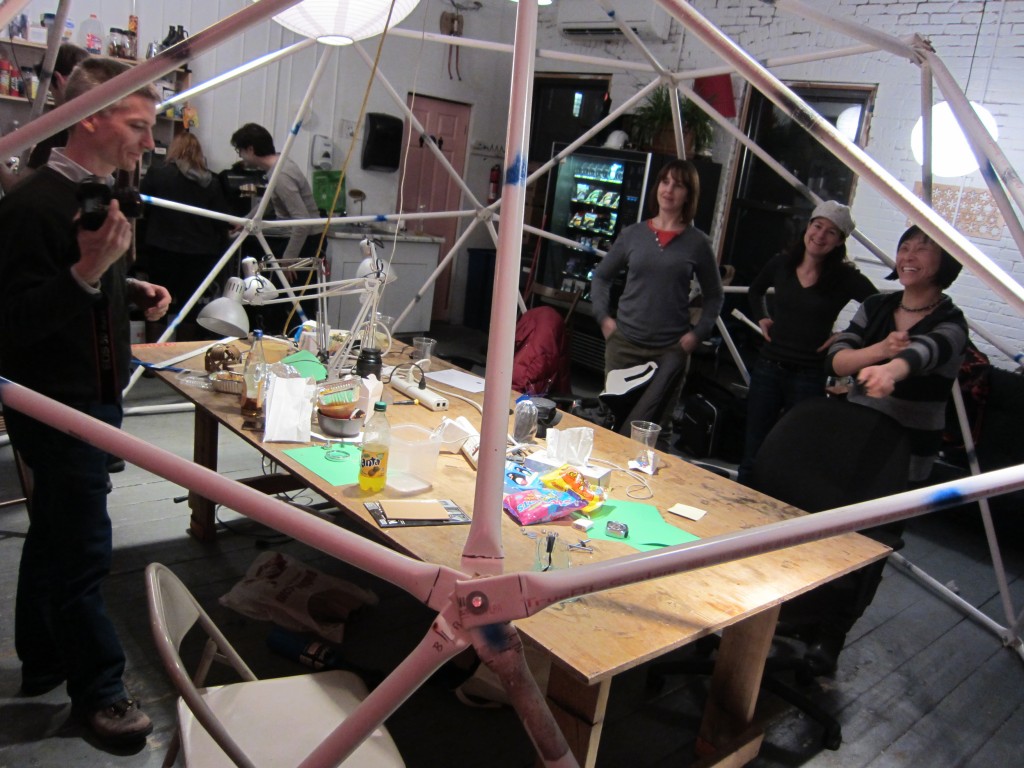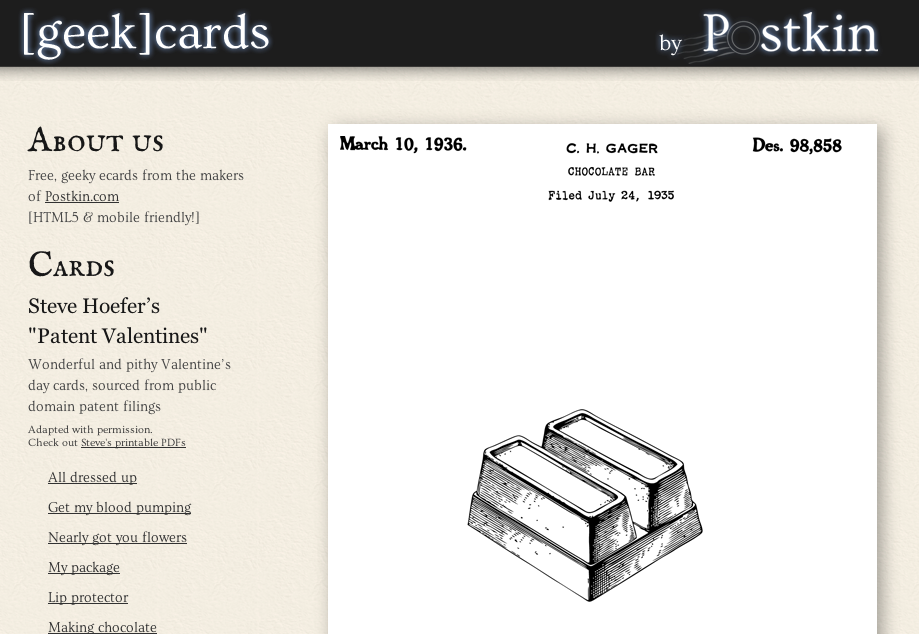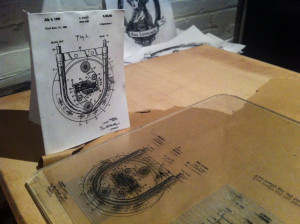I recently acquired an early 1900’s Gundlach 4×5 view camera with a few lenses and designed an adapter to mount a modern DSLR body where the film plane would go. There is no lens connected to the SLR — the 4×5 lens images directly onto the CMOS sensor. The bracket design is thing:18989 and can likely be adapted for other field or monorail cameras. There are some limitations with the design, but it works acceptably well in practice.
Mystery Box
When Raphael needed to clean up the faces of the aluminum enclosure for his latest mysterious project, he decided to go fancy.
Intro to HTML/CSS Workshop this Saturday
Come learn how to create websites with Alexis this Saturday. She’ll walk you through step-by-step and get you creating your Web 2.0 foundations in no time using an open source code editor.
Sign up at EventBrite: http://www.eventbrite.com.au/event/2838147977/
The Resistor Jeltone
A few months ago we put together a little team to enter the Jello Mold Competition at Gowanus Studio Space. The team members were me, Ranjit Bhatnagar, Astrida Valigorsky, and Mimi Hui. After a false start or two, we ended up making a working toy piano out of jello (and some electronics). You can see them in action on the videos below.
As part of our experiments we realized that jello and fruit, which contain a lot of water, are conductive. Embedded in each jello/fruit key is a sterling silver pin (food safe) connected to an Arduino microcontroller underneath the piano’s base. Below the piano’s case is another sterling silver pin. With this setup, the JelTone can either be played with a metal utensil connected to the Arduino, gloves enhanced with conductive thread, or bare hands by touching both a key and the piano’s case.
If you’d like to make your own, you can get the project files, code and instructions from Thingiverse.
The JelTone (in its jello and fruit versions) was exhibited and eaten at the 2011 Solid Sound Festival (Mass MoCA), the Jello Mold Competition (where it was awarded the creativity prize), the NY Hall of Science “Dead or Alive” Halloween Festivities, the Toy Piano Festival, and the Guthman Musical Instrument Competition.
A stellar performance by Ranjit at the
Guthman Musical Instrument Competition
A master pianist plays the Jeltone at the NY Hall of Science
The Jeltone at the 2011 Solid Sound Festival
The Jeltone at the Jello Mold Competition
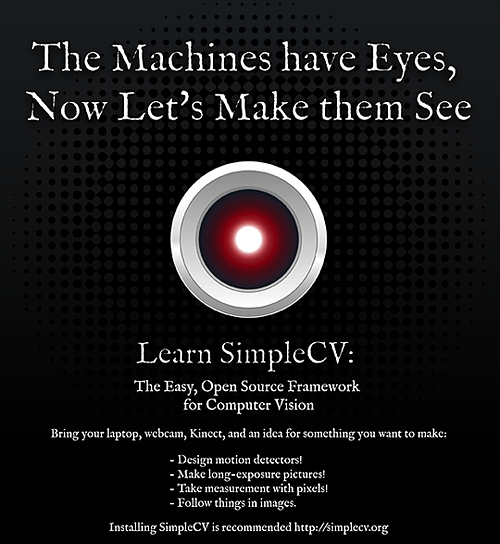
Do you want to add computer vision to your project? Do you want to make your own 3D images, vision-based musical instrument using a kinect, or teach your robot how to follow a ball? In this class Ingenuitas, the maker’s of SimpleCV, will give you an introduction to performing computer vision with python. We will cover the basics of computer vision and provide a brief introduction to python. This 2.5 hour class will start with a 90 minute tutorial, followed by an hour of demos where we will show you how a number of awesome projects that were made in just an afternoon. We will conclude with an hour or more of open instruction where we work on projects and the instructor will provide discussion relevant to student interest and one on one feedback. Students should bring a laptop with SimpleCV installed and a web cam or Microsoft Kinect. Students should install SimpleCV and python before attending and bring either a web cam or Microsoft Kinect.
Laser slicing
While uploading a model to thingiverse, I noticed an ultra cute Cthulhu and had to print it immediately on the Makerbot at NYC Resistor. Then I had an idea that the same process that generates the gcode shells for the makerbot could be used to generate slices to be cut on the laser cutter.
Continue reading »
Morse code keyboard
Have you switched your QSOs to PSK31 or some other digital mode, but miss the joy of sending CW with an iambic paddle? Then here’s a project for you.
Continue reading »
Dome If You Want To
Tonight, we assembled our new 16′ diameter PVC dome. The result of two solid Saturdays of work, it came together beautifully. Now we just need to disassemble it and move all the furniture back in before tomorrow’s class…
Continue reading »
A few days ago, one of our newest members, @dustynrobots shared a link to some amazing Valentine’s day cards with the rest of the group.

These amazing Valentine’s day cards for makers by Steve Hoefer are sourced from old public domain US Patent Office. They’re awesome and hilarious, and have inspired us to make a few things.
First, it got me to make the ecard site that I’ve been thinking about for a while now. Postkin’s GeekCards are free, funny ecards for the geeky people in your life. These cards were so amazing, once Steve agreed to let me use them, I had to get the site built in time for Valentine’s day!
Now that the site is built, I’ll be adding more geeky ecards for other events soon! It’s also flash-free and built on web standards so you can actually view the cards when you get the email on your phone.
Hope you enjoy the ecards, and if you have ideas for other geeky ecards we can create, please let me know!
In the meantime, Trammel has been working away on letterpressed editions of these cards on our Intaglio press. Hopefully we’ll have some more pictures of the process and finished cards soon!
Trammel has a great writeup on using the letterpress, but if we pester him in the comments and maybe he’ll do a post about the process of making these plates and some of the other amazing new stuff he’s been up to with the letterpress lately!
Hacking the Gilson
Like playing chase-the-laser-pointer with a kitten.
After a couple weeks of hacking on the Gilson we have PID* control.
When we first saw the Gilson, we didn’t have access to any feedback mechanisms. All we had were panic stop modes of control. After a ton of experimentation, and Nick reading five control theory books, we are having fewer incidents in which someone yells “Holy Crap Make It Stop Before It Destroys Itself!” It’s not yet a null set, but the cardinality is significantly reduced.
<cue loud bang>
* proportional integral derivative
